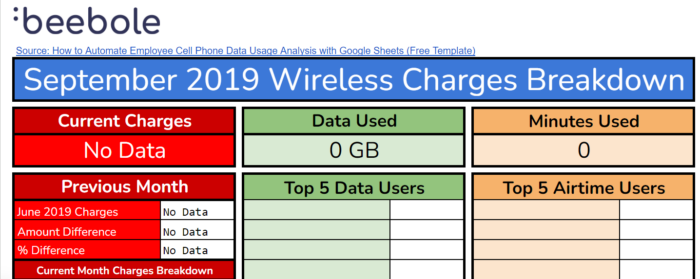Occupational health and safety (OHS) is multidisciplinary, encompassing a range of issues related to health, safety, and welfare at the workplace. The field has evolved drastically over the last two-hundred years, and OHS now goes beyond hazard prevention and incorporates the optimization of working conditions to increase employee wellness and productivity. This includes employees’ rights to receive information and participate in decisions about their work. Today, occupational health and safety professionals have also placed new emphasis on the importance of mental health and work-life balance.
Due to recent unprecedented challenges for workers and businesses, there is a renewed focus on workplace health and safety. Or perhaps it would be more appropriate to say health and safety “while working”, as more people than ever now work from home. In light of this, optimizing your organization’s health and safety initiatives should be a top priority. We spoke to 3 experts in occupational health and safety to get their tips and advice on caring for your team and strengthening your business.
Why are health and safety at work important?
Of course good leaders want happy, healthy employees. But from a business standpoint, why is employee wellbeing so important?

Michelle McQuaid
Author, Teacher & Speaker
Translates positive psychology and neuroscience research into strategies for health, happiness, and business success
More than a decade of studies consistently show that healthy, happy employees bring all sorts of business benefits including:
- Feeling nearly 6 times more engaged in their work (Gallup, 2017)
- Being up to 29% more productive (Rongen et al., 2013)
- Feeling almost twice as satisfied in their job (Gallup, 2017)
- Being 125% less likely to burn out (Porath etc al., 2012)
- 70% fewer safety incidents (Gallup, 2016)
- 24-59% lower turnover (Gallup, 2016)
- 10% higher customer ratings (Gallup, 2016)
- 10% higher above-average shareholder return (BITC, 2013)
How can health and safety be improved?
What are some basic steps that employers can take to minimize employee exposure to illness at the workplace, as well as support mental health and wellbeing? What about considerations for employees working from home?

Richard Jones
Head of Policy and Regulatory Engagement at The Institution of Occupational Safety and Health
Creating and promoting global public policy at the world's largest professional body for health and safety.
Employers, with the support of occupational health and safety (OSH) professionals, are vital in ensuring workplaces are risk-controlled. Organizations must thoroughly plan and organize a safe reopening, using risk assessments and controls to make workplaces secure and protect all workers, including vulnerable groups.
Assessments should plan for the redesign of processes to allow for physical distancing, adequate ventilation, plant inspection, hygiene arrangements, and personal protective equipment (PPE). COVID-19 awareness training should be factored in, as well as ongoing monitoring and mental health support.
There are a range of measures employers should consider to minimize exposure to COVID-19. These include phased returns and one-way systems, barriers, improved hygiene and cleaning regimes, and appropriate use of PPE and face coverings. Ongoing communication is vital. Employers need to make sure that workers know that those with symptoms shouldn’t come to work, as well as how to raise concerns and what support is available to them.
Working from home remains effective for minimizing COVID-19 exposure at work. Work-related stress and musculoskeletal risks must be addressed through improved home workstations, working methods, and work-life balance. Home workers needing to self-isolate should also be supported.

David Ballard
Consultant, former Director of the American Psychological Association’s Office of Applied Psychology
Promoting employee well-being and organizational performance by integrating psychology and business.
As people return to the office or settle into new working arrangements during the COVID-19 crisis, employers should make mental health a regular part of the conversations they have with their team. The pandemic has thrown a mountain of new stressors at people, and many employees could benefit from some extra support.
One concrete step employers can take is to share information about resources available to support employees’ psychological wellbeing and help them manage mental health issues. At the most basic level, this involves communicating with employees to make sure they understand the mental health benefits available to them through their health insurance and / or their organization’s Employee Assistance Program. These are often underutilized benefits and employees might not know what’s covered, the types of issues they can get help with, or how to access services.
Beyond direct mental health support, encouraging use of other available programs and policies can be helpful. This includes wellness activities, flexible work arrangements, and opportunities for social connectedness and peer support.

Michelle McQuaid
Author, Teacher & Speaker
Translates positive psychology and neuroscience research into strategies for health, happiness, and business success
Given 36.7% of US workers report that they are struggling with their mental health, in addition to providing PPE, checking people’s temperatures, and maintaining physical distance measures, workplaces also need to prioritize the following.
- Gauging Workers’ Mental Temperature – Understand how workers are feeling about returning to the workplace. Make it safe for workers to speak openly and honestly about their concerns and their hopes for creating new norms around working safely and productively together.
- Offering Free Wellbeing Testing – Encourage workers to measure their wellbeing so they understand what’s working, where they are struggling, and what they want to prioritize when it comes to caring for their mental, social, and physical wellbeing.
- Recognizing the Symptoms of Struggle – Educate workers, so they know that feelings of stress and struggle are not signs that their wellbeing is breaking, but rather a reflection of internal and external challenges. Make it safe to talk about the struggles that people are experiencing.
- Encouraging Personal Wellbeing Practices – Give workers access to short, simple wellbeing training sessions and small group check ins that put simple, evidence-based practices at their fingertips. Help workers to support and celebrate each other’s efforts.
- Recommending a Daily Dose of Leader Care – Teach managers the skills to genuinely connect with and coach their people through this challenging time. Encourage leaders to deliver daily doses of care, compassion, and appreciation for their team members.
- Planning Regular Staff Check Ins – Invite workers to provide feedback and feed-forward in their teams and across your workplace, to continue co-creating a new work reality as circumstances unfold.
Who is responsible for OHS?
Many wonder exactly who is responsible for occupational health and safety. Of course, safety must be a joint effort. Some responsibility lies with leaders, but how can employees themselves collaborate to stay safe?

Richard Jones
Head of Policy and Regulatory Engagement at The Institution of Occupational Safety and Health
Creating and promoting global public policy at the world's largest professional body for health and safety.
Good cooperation is essential to keeping everyone safe and healthy, with arrangements being well-planned and discussed with workers. Employers have a duty of care and should ensure they manage their OSH risks, that workers have access to appropriate training, spacing, hygiene facilities, PPE, etc. and that workers maintain distance, wash hands, cough or sneeze into tissues, and avoid touching their faces or shaking hands.
Employees can also be the eyes and ears of their employers and report any concerns. Those needing help with wellbeing issues should take advantage of any employee assistance programs their employer provides. And it’s critical that employees stay at home if they or someone in their household has symptoms.
They should also heed government guidance. This includes lockdown restrictions, rules on traveling, quarantining, and socializing, and test, trace, and isolate requirements. Those who work from home can benefit from guidance on preventing musculoskeletal and wellbeing problems and maintaining work-life balance.

Michelle McQuaid
Author, Teacher & Speaker
Translates positive psychology and neuroscience research into strategies for health, happiness, and business success
Our recent Wellbeing Lab 2020 Workplace Report and other studies have found caring for our wellbeing is not a solo endeavour. Associate Professor Aaron Jardon notes that our wellbeing perceptions, experiences, and behaviors are diverse and spread through a complicated web of social connections at the Me (individual workers), We (teams/leaders), and Us level (the entire workplace).
While each person in the organization impacts upon their team and workplace, leaders play a particularly significant role in nurturing or impairing this web. Workers who reported that their managers often expressed care, compassion, gratitude, and appreciation towards them were more likely to be able to manage their wellbeing and reported higher levels of job satisfaction, performance, and commitment to their organizations. They also reported significantly higher levels of productivity over the past month compared to their pre-COVID-19 productivity levels.
What resources do you recommend to managers who are establishing workplace health and wellness initiatives?

David Ballard
Consultant, former Director of the American Psychological Association’s Office of Applied Psychology
Promoting employee well-being and organizational performance by integrating psychology and business.
The most important thing an employer can do when launching a workplace health and safety effort is to start with a good assessment. Without identifying the actual needs of the organization and its employees, managers can wind up adrift in a murky sea of wellness programs and vendors. They can become overwhelmed by endless potential offerings, generic off-the-shelf solutions that may or may not be a good fit, or questionable products and services based on pseudoscience.
Employers usually have a lot of data that can help with this assessment, including from health claims, health risk assessments, existing programs and benefits, organizational performance indicators, and employee surveys and suggestions. It’s critical to involve employees in the process of identifying needs, developing programs, and evaluating results. This helps to get buy-in from workers and gives them a voice in shaping wellness efforts that fit their needs and preferences and are more likely to be successful.
If an organization doesn’t have the internal resources to conduct a good assessment, they can tap the expertise of an independent organizational or occupational health psychologist, who isn’t entering the engagement with a goal of selling their own products. Employers can also learn from the experience of other organizations such as the Health Enhancement Research Organization, the International Association for Worksite Health Promotion, and the International Foundation of Employee Benefit Plans.

Michelle McQuaid
Author, Teacher & Speaker
Translates positive psychology and neuroscience research into strategies for health, happiness, and business success
The free PERMAH Wellbeing Survey is a great way to see how managers are doing and helps them create a personal wellbeing plan from more than 200 different evidence-based interventions. In addition, they can share the tools with their teams as a way to open up discussions about wellbeing.
The Making Positive Psychology Work podcast interviews the world’s leading researchers and practitioners on how we apply the science of wellbeing in workplaces and has a weekly cheat sheet to help apply these ideas in your workplace.
Should workplace wellness initiatives be mandatory?
To what extent do you recommend making wellness or health initiatives mandatory for employees? Where do we draw the line to ensure these initiatives don’t become an added burden for your team?

Michelle McQuaid
Author, Teacher & Speaker
Translates positive psychology and neuroscience research into strategies for health, happiness, and business success
Caring for our wellbeing requires ongoing commitment rather than short-term compliance. Unfortunately, when we mandate things like wellbeing, while we may get some short term compliance, we rarely get commitment. As a result, we generally don’t recommend mandating these initiatives but inviting those who want to participate. The good news is those who do attend usually get so much out of these experiences that they willingly talk and share what they are learning and that often sparks the curiosity of more reluctant team members for future learning opportunities.

David Ballard
Consultant, former Director of the American Psychological Association’s Office of Applied Psychology
Promoting employee well-being and organizational performance by integrating psychology and business.
Although an employer may have good intentions in mandating participation in wellness activities, those efforts can backfire if not executed properly. People have different needs and preferences when it comes to engaging in heath-related activities. A paternalistic approach that forces employees into a one-size-fits-all program can inadvertently take control away from workers, add to their stress, and feel intrusive.
Forced to participate in wellness activities, employees who were already self-motivated may feel like it’s a chore. Similarly, those who participate against their will may do the bare minimum to meet requirements. This can lead to employees resenting programs they might otherwise find valuable. When an organization offers wellness activities that employees want and care about, they can avoid having to mandate participation. By involving employees in the process of developing wellness programs, managers can offer a variety of options that fit the company’s culture.
One exception will be training related to new health and safety protocols to reduce exposure and minimize risk during the COVID-19 crisis. When safety training is required, employers should set clear expectations and avoid a “one and done” compliance-based approach intended primarily to minimize liability. Instead, they should provide ongoing opportunities to engage employees in meaningful ways, monitor their effectiveness, and make adjustments as necessary.
What long term takeaways do you hope companies will gain from recent events, in terms of occupational health and safety?

Richard Jones
Head of Policy and Regulatory Engagement at The Institution of Occupational Safety and Health
Creating and promoting global public policy at the world's largest professional body for health and safety.
Responding to the pandemic is putting organizations’ OSH culture under scrutiny and testing how their working environments, systems, procedures and people interact. For a healthy and sustainable future, positive OSH cultures will continue to be central to motivating, supporting, and valuing workers.
So here are my “Super Six” takeaways for those organizations wanting to turn lessons from this past year into a lasting OSH legacy.
- Leadership – embed leadership behaviors, intelligence sharing, flexibility, and a consultative approach throughout your organization.
- Dialogue – enable workers to voice concerns and make suggestions and share your plans, discuss changes, and give regular updates using a range of technology, while avoiding overload.
- Risk-based approach – get good OSH advice, manage occupational health and safety risks, and engage workers in this, extending it into your supply chains.
- Workers’ health – use workplaces to protect and enhance health and wellbeing and promote your corporate health resources.
- Build capacity – train and develop skills in occupational health and safety, technology use, change management, and mental health and wellbeing throughout your operations.
- Horizon scan – continually assess your corporate context and future risk scenarios and optimize your emergency and continuity plans.

Michelle McQuaid
Author, Teacher & Speaker
Translates positive psychology and neuroscience research into strategies for health, happiness, and business success
I hope that companies will be more mindful about caring for the wellbeing of their people as we settle into a new normal. To understand that uncertainty is really a constant as we work together and to equip their people with the knowledge, tools, and support they need to care for themselves and others as they navigate the mess and magic that change brings.

David Ballard
Consultant, former Director of the American Psychological Association’s Office of Applied Psychology
Promoting employee well-being and organizational performance by integrating psychology and business.
Although many organizations had to move quickly and make adjustments due to the pandemic, this has hopefully demonstrated that change is possible and can produce beneficial results. Some employers who didn’t see telework and flexible arrangements as being viable in their organization have relied on it out of necessity and seen productivity remain high. Others have realized the importance of paying attention to their employees’ psychological wellbeing and mental health. Still others have rapidly modernized their communication infrastructure to keep people connected while physically distanced.
As people return to work, it won’t necessarily be best to keep doing things exactly the same way as during the shutdown. But if employers move forward in a thoughtful, strategic way and use lessons learned to inform the way they function in the future, then some organizations will emerge from this working in ways that are even more effective and better for employees than they were before.
The wealth of information available on occupational health and safety can be overwhelming. Remember that you can refer back to this page whenever you need it and post any comments or questions below. Our experts have also worked on other valuable resources that are worth a look. David Ballard recently worked with Columbia University World Health Organization Centre for Global Mental Health and AXA to create a toolkit to help business leaders support employees’ mental health. IOSH offers a free helpline for anyone looking for occupational health and safety advice at +44 (0)116 257 3199, as well as a wealth of great resources on their site.
—
Photo by Kelly Sikkema on Unsplash
![Fostering occupational health and safety [with insights from 3 experts] 1 Occupational health and safety](https://beebole.com/blog/wp-content/uploads/2020/10/occupational-health-and-safety-e1602101756996.jpeg)


![Tips for effective employee performance reviews [4 HR experts weigh in]](https://beebole.com/blog/wp-content/uploads/2020/10/employee-performance-reviews-700x332.jpg)
